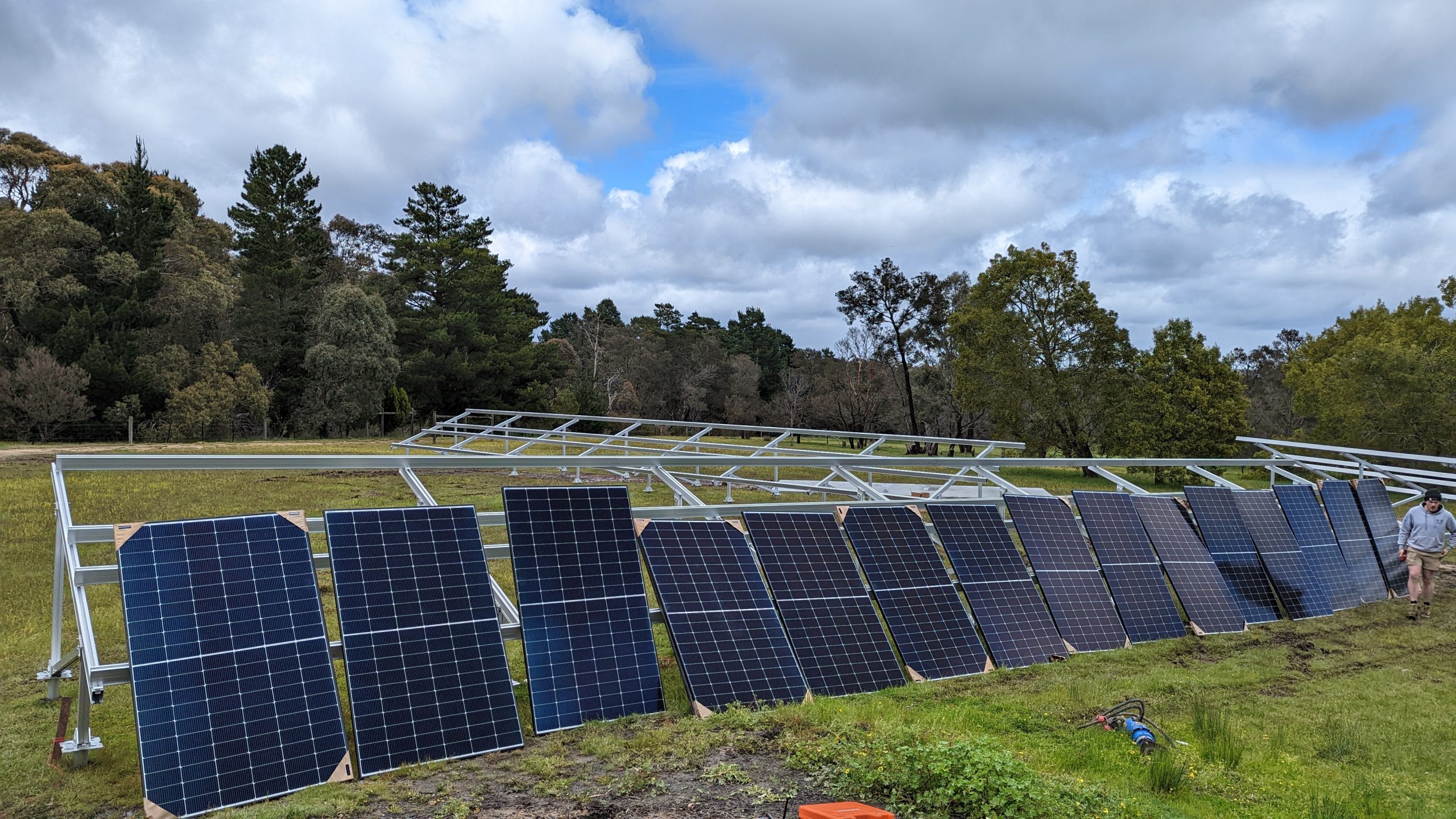 Off-Grid Solar Australia
Off-Grid Solar Australia

Since 1839, solar panel technology has developed, with substantial advances in more recent years. The first silicon solar cells appeared in the 1950s, and less-priced thin-film cells appeared in the 1970s. Crystalline silicon cells took over in the 1980s, while multi-junction cells saw a rise in efficiency in the 1990s.
In the 2000s, PERC technology was created, and more recently, tandem and flexible solar cells have been developed. Using semiconductors like cadmium telluride, silicon, copper indium gallium selenide, and solar cells, solar panels collect solar radiation and transform it into electrical energy. Three primary types of solar panels are:
Monocrystalline Solar Panels
These silicon single-crystal solar panels are the most effective solar panel currently on the market. Due to their distinctive shape, which is often a square with the corners taken off, they have a uniform black hue and are simple to identify. Monocrystalline solar panels can be utilized in off-grid power systems, mobile applications like boats, RVs, camping trailers, and residential and commercial rooftop solar installations.
Polycrystalline Solar Panels
These solar panels are less effective than monocrystalline solar panels because they are constructed of numerous silicon crystals. These are also square, but without the corners being squared off, and they are colored blue. They are ideal for large-scale solar installations and residential and commercial rooftop solar installations.
Thin-Film Solar Panels
Thin layers of semiconductor material are placed on a substrate, such as glass or metal, to create these solar panels. They can be formed into flexible, lightweight modules and are less expensive than solar panels that are monocrystalline or polycrystalline, but they are less effective.
Advanced Solar Technologies
Solar cell technologies refer to the particular components and constructions utilized in solar cells; they are various solar panels:
PERC Solar Cells: Advanced solar cells using PERC (Passivated Emitter and Rear Cell) technology add an extra layer to absorb more sunlight and decrease energy loss through recombination, making them more effective than traditional solar cells.
Bifacial Solar Panels: These solar panels have two sides that can produce power, catching sunlight that reflects off the ground or other adjacent objects. This property makes increased energy generation possible, particularly in areas with high albedo (reflectivity).
N-Type Solar Cells: They are made of n-type silicon, which ages more slowly than the p-type silicon found in conventional solar cells. As a result, the solar panel lasts longer and performs more consistently throughout time.
Tandem Solar Cells: They are sometimes called multi-junction solar cells—a type of solar cell that joins two or more distinct materials with various band gaps to boost efficiency. The cell can absorb different portions of the sun spectrum because each material layer has a unique band gap. As a result, a tandem solar cell has a greater energy conversion efficiency than a conventional solar cell since it can absorb a wider variety of sunlight’s wavelengths.
Floating Solar Panels: They are built right on the top of a water body such as a pond, lake, or reservoir. The photovoltaic (PV) modules that make up these solar panels are set on a buoyant frame, which keeps them afloat on the water’s surface. The primary distinction between floating solar panel systems and conventional solar panel systems is their placement.
Since its start, solar panel technology has advanced significantly. Solar panels will be essential in attaining the aim as the globe continues to move towards sustainable energy.
G’day, Australia! We’re here to shake things up in the energy world, right? We’ve got these ripper solar systems, decked out with the latest Sungrow and Deye inverters and those beaut Sungrow and Pylontech lithium batteries. They’re a real game-changer for places like Ballarat, Victoria, and all over Oz! Our Top Solar Gear Going All …
Continue reading “Givin’ Aussie Homes a Fair Go with Top-Notch Solar Tech”
1. Jinko Solar Panels: 2. Trina Solar Panels: 3. SunPower Solar Panels: Conclusion When choosing solar panels, consider factors such as efficiency, durability, warranty, and budget. Jinko offers cost-effective and reliable options, Trina provides a balance of performance and value, while SunPower stands as a premium choice with top-tier efficiency. Each brand caters to different …
Continue reading “Comprehensive Solar Panel Review: Jinko, Trina, and SunPower”
1. Pylontech Batteries: 2. PowerPlus Energy Batteries: 3. BYD Batteries: 4. Tesla Powerwall: Conclusion When selecting a solar battery, factors like capacity, compatibility, longevity, and budget play crucial roles. Pylontech, PowerPlus Energy, BYD, and Tesla offer diverse options catering to different needs and preferences. Whether for a small residential setup or a larger, more complex …
Continue reading “In-Depth Review of Solar Batteries: Pylontech, PowerPlus, BYD, and Tesla”
Inverter Equipment Review: Sungrow, Deye, Victron, and Selectronic 1. Sungrow Inverters: 2. Deye Inverters: 3. Victron Energy Inverters: 4. Selectronic Inverters: Conclusion Each of these inverter brands – Sungrow, Deye, Victron, and Selectronic – offers unique strengths suited to different solar energy needs. Your choice should depend on your specific requirements, whether it’s for residential, …